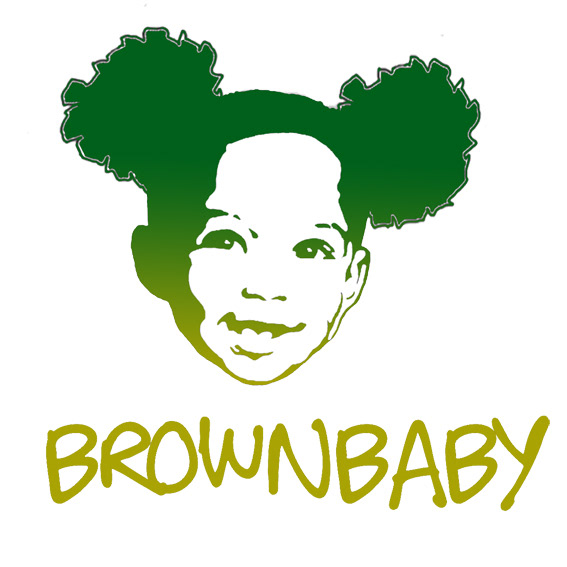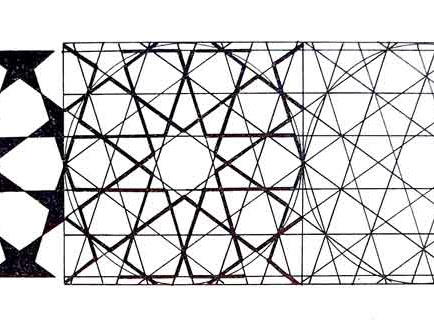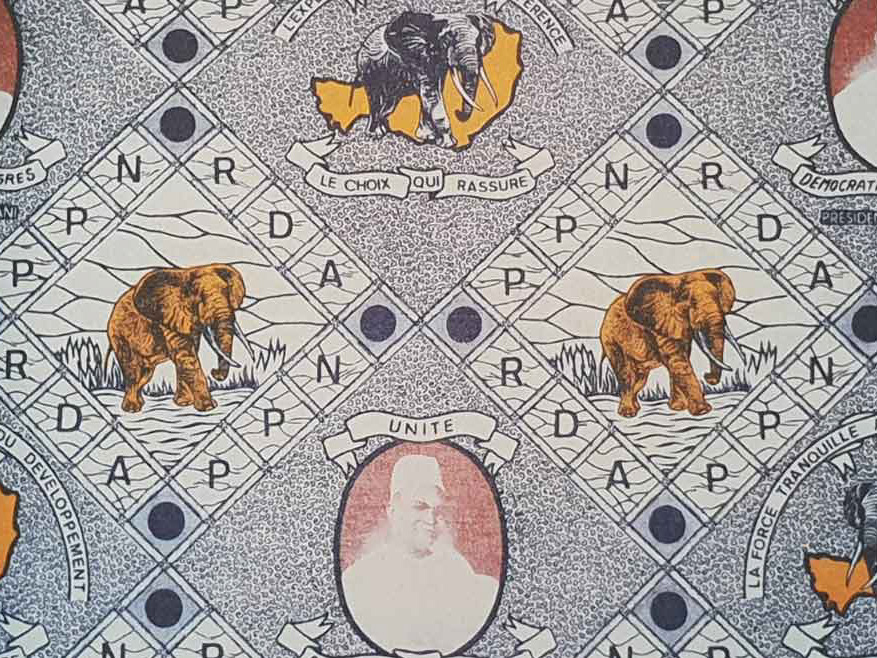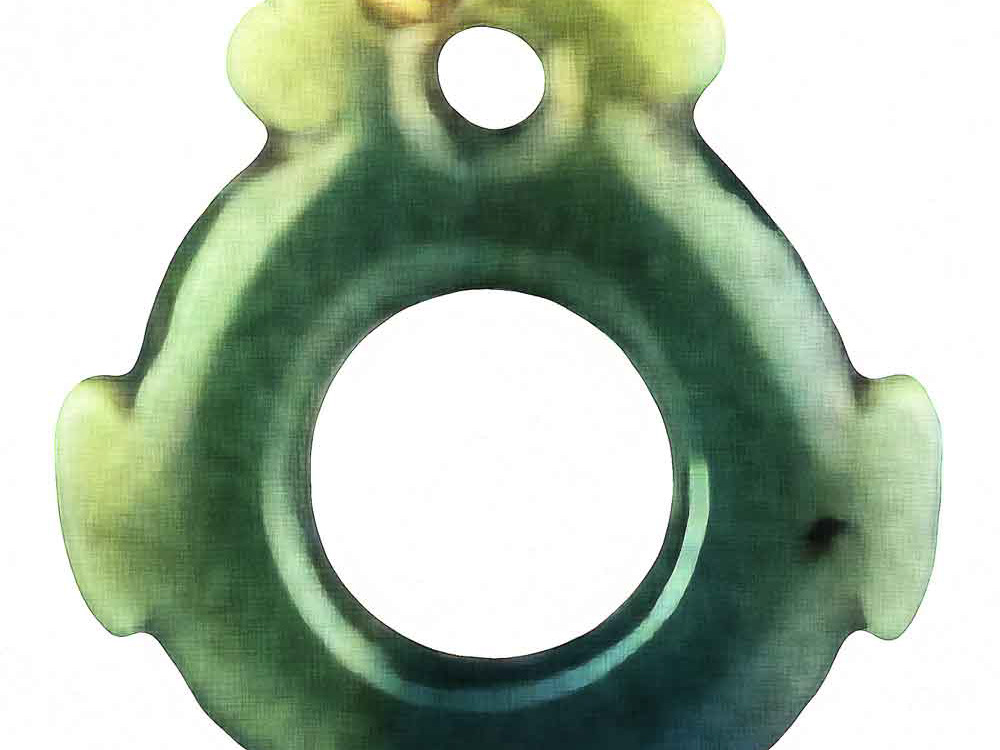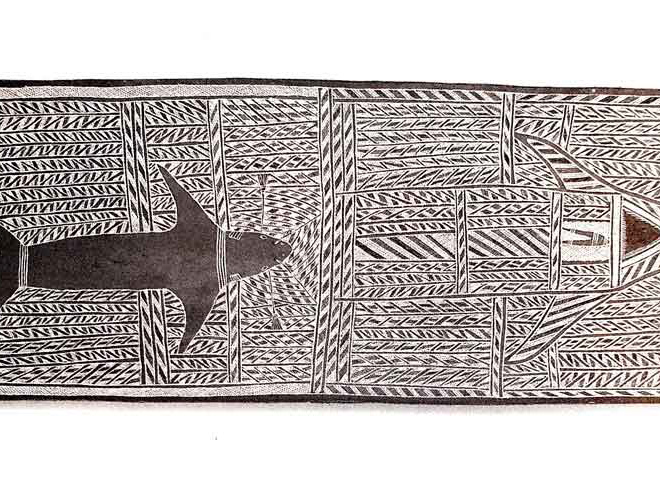TLB: Continuing our conversation….
We began to jump into our experiences and challenges of working with the people we are anticipating working with.
The intention is to work with groups of young people and elders - primary school (KS2) age - 8-11yrs.
And Secondary school - 14-18yrs.
Elders 70yrs +
There are elders at Pepperpot of 100+ yrs
The intention was to engage with small groups - a total of 10-15 people.
So a relatively small number of people.
What are your experiences of working with elders, youngers and intergenerationally?
MD: Something in the intro made me think of the circle - the table in the last meeting.
Also how we categorise. Is there some other way of understanding who we want to work with? In a way that gives another kind of access.
In between our conversation I have seen James Cameron’s ‘Way of Water’, which has brought other reflections.
Also thinking about the practice of Malidoma and Sobonfu Somé.
He talks about the relationship at 4yrs and his grandfather and how special that relationship was.
I had a similarly important relationship with my Grandmother.
You read about these relationships, esp between very old and very young.
Have you read ‘Of Water and the Spirit’?
Teens. I used to take my children to loads of events (14-18) but they are were often the only ones. Why is this age group not involved in these discourses?
Where they can enter discussions about meaningful things.
They went to rites of passage for young boys. But what about getting on with girls of similar age?
I dream of the time spent in Cameroon - crossing rope bridges, having the time of my life - I would love to bring out a group of young people to a space like that - this is life as well!
My approach to working with any age group is to bring people into conversation. What can be done to facilitate natural coming into conversation without the normal barriers?
We spoke of this “other thing” outside the human or everyday environment - divinity, spirituality, the third thing - that people can refer to or feel a relationship with that supports a conversation.
Food Journeys with groups with parents and young people. They young people felt they could have an opinion.
One in a botanical garden in Birmingham. Everyone was in the conversation. It was a very lively conversation with different perspectives - adults very prepared to listen to young people.
Creating things that people have in common, but don’t necessarily always talk about, so there is no expertise in the room, so we are all experts, we can all have an opinion on whatever it is
TLB: I am interested in how we operate as humans - especially the psychological and emotional and underlying things we do without noticing. One thing recently I read about was the ‘Halo Effect’ - creating judgments on people very quickly whether we like it or not.
How this plays out with our accents, or the way we look.
How this plays out with our accents, or the way we look.
How racial prejudice plays out for young black people or black women, based on presumptions.
How might we avoid that?
How might we set things up so as to avoid this?
So we don’t perpetuate this situation - the elders are immediately the ones with all the knowledge, or the youngers are the ones who need to learn etc?
How might we avoid that?
How might we set things up so as to avoid this?
So we don’t perpetuate this situation - the elders are immediately the ones with all the knowledge, or the youngers are the ones who need to learn etc?
MD: How do we create environments where the immediate concern is not to judge other people because there is something else to respond to. It could be a highly evocative environment - a strong smell, or colour to get a reaction.
The people in that environment may become layered into that.
The people in that environment may become layered into that.
TLB: A kind of distraction from the usual conditioning? That is interesting. Like traditionally through therapies people have tried to do - at the worst end ‘Shock Therapy’. But also pscillobin (magic mushrooms), MDMA, micro dosing.
If you can break people out of habits they have the best chance to form new ways.
Can we do this without the substances - using the surroundings and senses.
MD: or just ways of interacting. If you are given a task when you come in you are focused on the task.
If an elder is asked a question that requires a good answer from a younger person, then it may change the positionality. Interrupting habitual behaviour.
If an elder is asked a question that requires a good answer from a younger person, then it may change the positionality. Interrupting habitual behaviour.
People being given tasks where they need to co-operate - but perhaps not along the usual lines.
Can we find out from them what they think or understand of each other? The youngers of the elders and vice versa. So we know what it is that we want to disrupt.
TLB: I just had a vision of games - asking them to teach one another their games. We may need a load of games consoles!
This thing of connecting where you are being taught regardless. You are both using hands and motor skills and responses. Something that guarantees a certain failure but encouragement by the other to get through.
I like this idea of immediately giving people confidence. That we are all worthy and on a level.
This thing of connecting where you are being taught regardless. You are both using hands and motor skills and responses. Something that guarantees a certain failure but encouragement by the other to get through.
I like this idea of immediately giving people confidence. That we are all worthy and on a level.
MD: Pepperpot has a kitchen. Elders showing young ones so the young ones can do it. Being patient.
TLB: What if they were to describe the way their parent makes food. Regardless of age. Can we consider what experiences at all ages they would have.
MD: Without introducing shame
TLB: Trying to take it back as early as possible in terms of earliest memories - with siblings or parents
MD: I would mediate that with some kind of physical sensory thing. Eg The first time you went to the countryside. In the background the sounds of seagulls, or a tray of sand. Hands in sand or pebbles and talk about that.
What’s yours? Your first country trip?
What’s yours? Your first country trip?
TLB: I do have one strong memory of a trip to the seaside, the beach. It is not a particularly comfortable memory. With a group of people. I remember the feelings. It was going with a group to a pleasure beach kind of space. Toffee apples. A strong memory of honeycomb. I still buy a Crunchie with that particular memory in my mind. It never quite satisfies.
But it is difficult with me with memories when I go back. Because they are so wrapped up in my trauma of losing a parent. Never a hair's breadth from the sense of loss. Something’s not quite right. I felt very uncomfortable in a lot of spaces. Things felt dirty to me. Things felt not right. Unclean. I remember sleeping in places where I didn’t want to be.
I don’t have many memories before 6. They seem to have been locked off.
We used to go to Italy every Summer. That would have been around 10-13 yrs. Because my mother spent a lot of time out there when she was younger. We would go there and I have strong memories of the beach and especially up in the hills.
But it is difficult with me with memories when I go back. Because they are so wrapped up in my trauma of losing a parent. Never a hair's breadth from the sense of loss. Something’s not quite right. I felt very uncomfortable in a lot of spaces. Things felt dirty to me. Things felt not right. Unclean. I remember sleeping in places where I didn’t want to be.
I don’t have many memories before 6. They seem to have been locked off.
We used to go to Italy every Summer. That would have been around 10-13 yrs. Because my mother spent a lot of time out there when she was younger. We would go there and I have strong memories of the beach and especially up in the hills.
I have always felt a strong draw to a particular terrain - hilly, green, warm, streams, lakes.
I remember getting to Dominica in my 20s and thinking ‘Ah. This is it’.
MD: Well that is interesting. That is showing you what it might mean to other people. When we do things ourselves it shows us what might come up. Helps us to know what we may want to avoid or encourage.
When you started off with the impressions about early trips to the beach, I know there were always organisations of black folks hiring a coach and going to the beach. There was a smell of food and flasks. A small girl nestled amongst skirts and big people. Being on a coach. The small amount of time on probably quite pebbly beaches. The smell of food. The fussing.
When you started off with the impressions about early trips to the beach, I know there were always organisations of black folks hiring a coach and going to the beach. There was a smell of food and flasks. A small girl nestled amongst skirts and big people. Being on a coach. The small amount of time on probably quite pebbly beaches. The smell of food. The fussing.
My father had a Morris Minor and we went to Folkestone. We went more than once. It has a pebbly beach, the sea is quite rough.
Those would be pre-7-8 yrs memories.
Those would be pre-7-8 yrs memories.
When I was 9 I went to Jamaica. Proper beach. We went on a boat, so saw flying fish and dolphins - as a 9yr old it totally blew my mind.
TLB: Amazing how wrapped up it is, with parental connection. For me, for you?
How quick, as soon as we talk about pre-teens, we make that connection. The reasons why we are on holiday - stress, the need to get away, see family. One is immediately into the social connection.
Your experience of the beach mirrored my own. It had very little to do with the beach - or the water or the sand (there wasn’t much). Or the nature effectively.
Pleasure beaches and the culture of those, as opposed to spas.
I remember speaking about the class distinction between pleasure beaches and spa towns.
You go to Margate - human construction, dilapidated, very little nature.
Christchurch spa town - stunning stretch of beach, little but very expensive beach huts.
That division.
With our children we are very clear that they go to the beach and they take their clothes off and get into the sand and water. For me it wasn’t like that. That wasn’t what I/we were there for.
How quick, as soon as we talk about pre-teens, we make that connection. The reasons why we are on holiday - stress, the need to get away, see family. One is immediately into the social connection.
Your experience of the beach mirrored my own. It had very little to do with the beach - or the water or the sand (there wasn’t much). Or the nature effectively.
Pleasure beaches and the culture of those, as opposed to spas.
I remember speaking about the class distinction between pleasure beaches and spa towns.
You go to Margate - human construction, dilapidated, very little nature.
Christchurch spa town - stunning stretch of beach, little but very expensive beach huts.
That division.
With our children we are very clear that they go to the beach and they take their clothes off and get into the sand and water. For me it wasn’t like that. That wasn’t what I/we were there for.
MD: I’m thinking about the places I took my children. We spent a lot of time in the country. One of the things uppermost in my mind was safety! Also doing things that I didn’t necessarily want to do myself, but would create memories for them.
I remember going to Snowdonia to take a train ride - a Thomas the Tank Engine themed ride.
Rushing around doing things for them!
I am not sure our parents had the same idea. But it was good they took us out all the same.
And then there were school trips. Did you have any of them?
I remember going to Snowdonia to take a train ride - a Thomas the Tank Engine themed ride.
Rushing around doing things for them!
I am not sure our parents had the same idea. But it was good they took us out all the same.
And then there were school trips. Did you have any of them?
TLB: Yes, I remember a trip to the Lake District. It was a time when we were just becoming adolescents. The whole boy-girl thing. To be in that space was really good. To be able to be physical.
The other one was a journey to go skiing in Austria. A 50-hour coach trip, which was very much part of the journey.
The other one was a journey to go skiing in Austria. A 50-hour coach trip, which was very much part of the journey.
MD: Our school trips were mostly local, London. Apart from secondary Geography and Biology trips to Scotland. It is as if I have some ancestral connection. It’s weird. I’m on the train and I don’t want anyone near me, don’t talk to me, don’t touch me - I just want to eat this landscape.
TLB: I feel that completely when I am up there. Scotland and Wales, if I am moving through those spaces I just want to take it all in. Don’t distract me.
MD: They left us somewhere near Inverness. The two teachers just abandoned us. 10 girls on the moors, for the whole day. It was dusk when they came back. About 15 years old. Left to count heather.
TLB: In a sense I’d almost argue that is the best way. The alternative is you’re just taking your classroom to this wild and open space. I see it in a schooling context. But in a human, environmental, emotional context, I would think being left up there would be far more powerful. You remember it after all.
MD: They used to take us into pubs too.
TLB: Yes, I’ve been regularly shocked by the culture outside of London. The unspoken culture of Britain, we talk about the Jimmy Saville’s of this world and paedophillia. Has everyone forgotten that this was - maybe still is - the teen pregnancy capital of Europe? What is it that does that? Not just a bunch of perverts, but a culture that makes it perfectly normal for a 14 year old to be in the pub.
MD: With all that accompanies that. There was something about that time, we were heifers. We were young outspoken women. I remember we cornered this teacher once.
TLB: I think again it is a bit of an unspoken thing, how physical adolescents become. The energy and hormones that they carry. That is what secondary schooling is. As human beings, I would argue that we require something to keep young people between certain ages safe and accountable. There seems to be a need for some form of structure or safety around young people of a certain age, because of the internal violence that is going on within their minds and bodies at that time. I found it a very vulnerable period.
MD: You remind me of the Maasai warriors. How cultures… teenage hood is very recent.
TLB: I think of the Teddy Boys. Who dressed up in Edwardian era clothing. From the 1940s/50s.
MD: When I was reading in the library there was no teen section. I feel it is very recent. In other cultures you are moving toward adulthood. You have strong steps about increasing responsibility. ‘Water and the Spirit’ talks about his initiation.The things it taught was being in service to the wider community. How do we have that in the West? Are we being supported to become community members? Commercialisation has shaped how we relate to these things.
TLB: How much has the creation of the teen been influenced by the creation of the child? What you describe in a maasai context is a porousness. You are learning things at 5 or 8 years old. In this society, it seems more strictly demarcated. To have a “successful” childhood means to have never raised your hand in work or struggle. To have been served upon til 12/13, even older. Yet to have “successful” teenage years you are supposed to convert into this working human being who can get a job and take on responsibility.
MD: Or is expected to go haywire. Weird things are happening. We have not begun to understand how the psyche manages all of these things. I like the Sylvia Wynter /Fanon ‘Sociogenic Principle’ . The way in which social lives shapes the acculturation of people. Different in different societies rather than universalised. It makes a mockery of the English managing Indian water supplies! The principles they take are not related to the native country.
Never mind what education does.
It would be interesting to hear from the elders what their different understandings are. Fifty year olds at Pepperpot. 50/60 as well as older. To find ways of hearing from them. When we were talking about Anansi. A woman in her 80s. My understanding is from older people. You may have to be from particular islands. I understand that my understanding is quite sophisticated. The African connection is not taught everywhere. I have story books where many of the stories are related to duppy. They are quite dark. Can be quite sexual or quite violent.
Never mind what education does.
It would be interesting to hear from the elders what their different understandings are. Fifty year olds at Pepperpot. 50/60 as well as older. To find ways of hearing from them. When we were talking about Anansi. A woman in her 80s. My understanding is from older people. You may have to be from particular islands. I understand that my understanding is quite sophisticated. The African connection is not taught everywhere. I have story books where many of the stories are related to duppy. They are quite dark. Can be quite sexual or quite violent.
TLB: Yes, one of the anansi stories we have is quite violent. With the fish. He gets eaten by a fish, then his son comes along and cuts it open
Anansi the Spider, a tale from the Ashanti - illustration by Gerald McDermott
MD: I’m talking about much more than that! Some of them come away from Anansi and go directly into horrors. Why are people told them? Is it about communicating the horror of their existence. As a warning? I was also brought up with Edward Lear. I heard a story when my daughter was young. It was really horrible. A woman was pushing a pram with her two children, crossing Balham High Road. One child let go of her hand and ran. She had to make a choice, which one. In the confusion a lorry comes and crushes everybody. Another where a little girl refused to hold her mothers hand. Little girl stays on the side. Mother starts to go thinking she will follow. But she doesn’t but when she does a lorry comes and kills her.
So when your daughter is acting up….
These stories, when I read them, I wonder, what are they trying to achieve?
Folk tales were there to mark events. To act as warnings.
‘To shoot Hard Labour’ describes a situation where a young woman is punished for being available to someone else. So these stories are needed to warn people, do this or don’t do that.
So when your daughter is acting up….
These stories, when I read them, I wonder, what are they trying to achieve?
Folk tales were there to mark events. To act as warnings.
‘To shoot Hard Labour’ describes a situation where a young woman is punished for being available to someone else. So these stories are needed to warn people, do this or don’t do that.
To Shoot Hard Labour: The Life and Times of Samuel Smith, an Antiguan Workingman, 1877-1982
- Keithlyn B. Smith, Fernando C. Smith
TLB: So is there something of use around this for Untold Stories? It brings me back to the parental discussion. How quickly we both recalled parents in those journeys. I am mindful of any traumas it may bring out. I am probably more willing to open up today about those things. But there may be a space there for exploring that. I am mindful of how we are able to express things.
MD: We were talking about duppys with the elders. Different islands have different ways of telling them. I realised at one point the person telling a story was being scorned or teased by others in the room. So what is our accountability around the telling of stories? I remember listening to children tell stories of what they’d had for breakfast and feeling quite concerned by it, thinking “we have a situation here”. At least half of them hadn’t had anything.
But the thing about Untold Stories is just that. They are untold. There are so many layers to our lives and those in this community. Something is going to come up that we weren't intending or expecting.
But the thing about Untold Stories is just that. They are untold. There are so many layers to our lives and those in this community. Something is going to come up that we weren't intending or expecting.
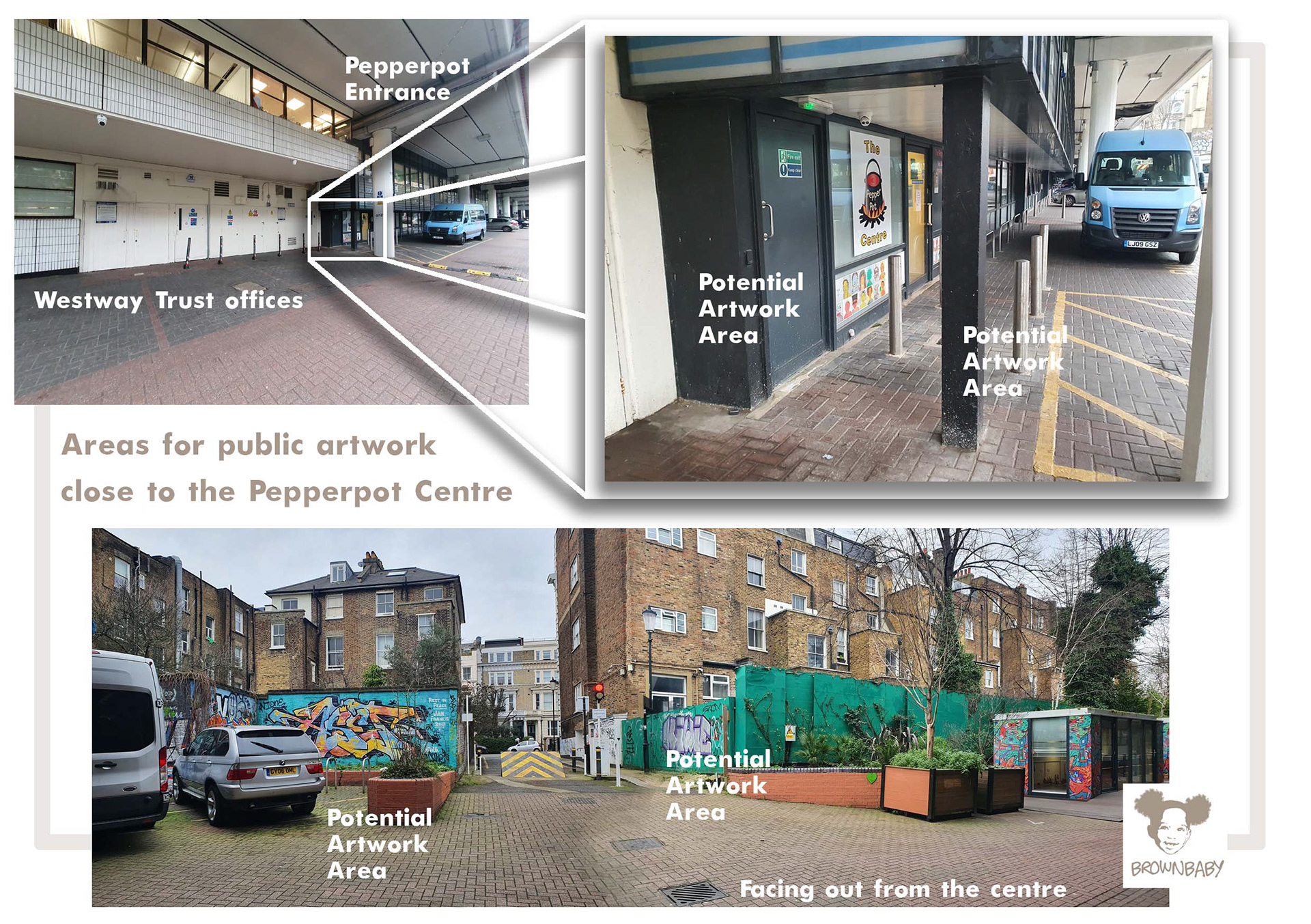
TLB: Another way is to reverse engineer it. The eventual purpose is to create an artwork. Something publicly accessible close to the [Pepperpot] centre. To tell stories is good But how do we translate that into a piece of artwork that is effective?
What I’d like to do from here is go back over our conversations. Dive back in. Bring things together
What I’d like to do from here is go back over our conversations. Dive back in. Bring things together
MD: I am inclined to put art and science in inverted commas.
TLB: Where non-European art is concerned….there isn’t agreement on what constituted art amongst the European nations. Let alone when we bring in primitive or ethnic art or indigenous art etc etc. Art is up for grabs in that sense.
MD: So maybe the terms of that could be collaboratively defined. Getting the young people to say what they think art is. And the same with the older young people and the elders.
To come up with something that we then create something in relation to.
To come up with something that we then create something in relation to.
TLB: So much indigenous art is about the journey. It is about the place. This telling of something. When you were speaking of the warnings. The incidents in Balham. I can imagine taking a story like that and going into it in an indigenous way. Talking about a journey of what happens, recalling the power of what happens, the impact and how that relates to ancestral power and a wider power. There seems to be a consistency in what I have read. Similarly with Mandalas, to take people into a state of calm and openness, that they then draw out from that and put something onto the paper.
You can see where mandalas get quite figurative.
I wonder about that in terms of outcome. I am not sure how much sense these pieces need to make. I am not sure they need to make any sense. The brief is to increase the amount of publicly accessible art or expression that relates more to our diverse communities - our non-Western modern communities. In that way I don’t see that it needs to make sense at all. As in, if I imagine we ask all participants to write some nice poetry and put it onto some nice tiles and stick it up somewhere. That might be really powerful. But for me that is very traditional Western public art. ie you walk up to it, it is in English, you can read it, we all know about poetry, prose etc.
I am thinking, in a sense, why should you recognise it? If we are actually really talking about displaying something that is not simply a reflection of our Western existence but is something deeper than that, why should anyone recognise it?
You can see where mandalas get quite figurative.
I wonder about that in terms of outcome. I am not sure how much sense these pieces need to make. I am not sure they need to make any sense. The brief is to increase the amount of publicly accessible art or expression that relates more to our diverse communities - our non-Western modern communities. In that way I don’t see that it needs to make sense at all. As in, if I imagine we ask all participants to write some nice poetry and put it onto some nice tiles and stick it up somewhere. That might be really powerful. But for me that is very traditional Western public art. ie you walk up to it, it is in English, you can read it, we all know about poetry, prose etc.
I am thinking, in a sense, why should you recognise it? If we are actually really talking about displaying something that is not simply a reflection of our Western existence but is something deeper than that, why should anyone recognise it?
MD: You have called the project Inside/Outside. Not inside/Inside. There is something about the interface between the two. Something like a translation. You are making it accessible to the outside. So many of the Caribbean writers, poets of relation. Glissant, talking about relations, creolisation, almost like the stages of becoming modern. Although the modern is a construction. We are doing this within a context of receiving funding from a place with certain expectations about things being translated. Or accessible to the modern.
TLB: I am not sure they are requesting a translation though
MD: But we ourselves are always translating ourselves in a sense. It is almost with us unless we can find a really good mechanism to get the people concerned to decide how their work gets defined and presented. That would be the ideal situation. As long as it makes sense to us. We understand the relationship of these different groups to each other and we are making sense, but where we realise that if you put it somewhere you’d really have to go into it to really get it. That would be a good outcome. I’d then understand what you're saying that it doesn’t have to be translated in a sense. But people who are doing it and are part of it by extension should be able to access it.
TLB: Yes, I think artistically, visually a lot of what I do is to take something that is quite difficult to grasp and put it into a recognisable form. In a sense it is about creating a doorway. A bit like what we do with CCK.
If you take a person and put them into a room - the room might have curved walls, corners, it might be a sphere, doesn’t matter the shape or colour - but when you then ask that person to walk through something, how many people will recognise what to walk through unless you show them a door.
Unless you show them something that they will recognise as something to go through. So I see there being a role for the artist in creating that door. Creating something that people can visually or audibly or some way through their senses be taken through and begin to experience and consider and think about other things. I find it particularly useful when working with communities, because children can do all sorts of things creatively that are not always recognised by older people. They can be dismissed or not really seen. So I enjoy taking young people's work and putting it into a form that people are impressed by. But within that it is very important that the young person can still see their work. That is what I have specialised in over the past 15 years. I will use various methods and techniques to transfer their work into something more recognisable or impactful for wider society or for older people. But people can still see their piece in it.
[IDEA - take the things young people say and have them spoken by older people. Gauge reaction? Could also be done between genders or other groups. How much of our reaction is defined by our perception of what we are reacting to?]
So similarly for this I can imagine doing something quite recognisable. I had a vision there for two shapes of tile that can tessellate. They can interact together. So I could create a pattern, with a square tile and a longer rectangular in between. That is immediately recognisable as a pattern but what is on those tiles is another matter. You could explore all sorts of things, which would have meaning for those who have contributed. But it is wrapped up in a pattern.
I will go into the book on Sahel African Wax prints, where they have taken in political statements or movements. There are some with information technology on them - mobile phones, computers.
I will go into the book on Sahel African Wax prints, where they have taken in political statements or movements. There are some with information technology on them - mobile phones, computers.
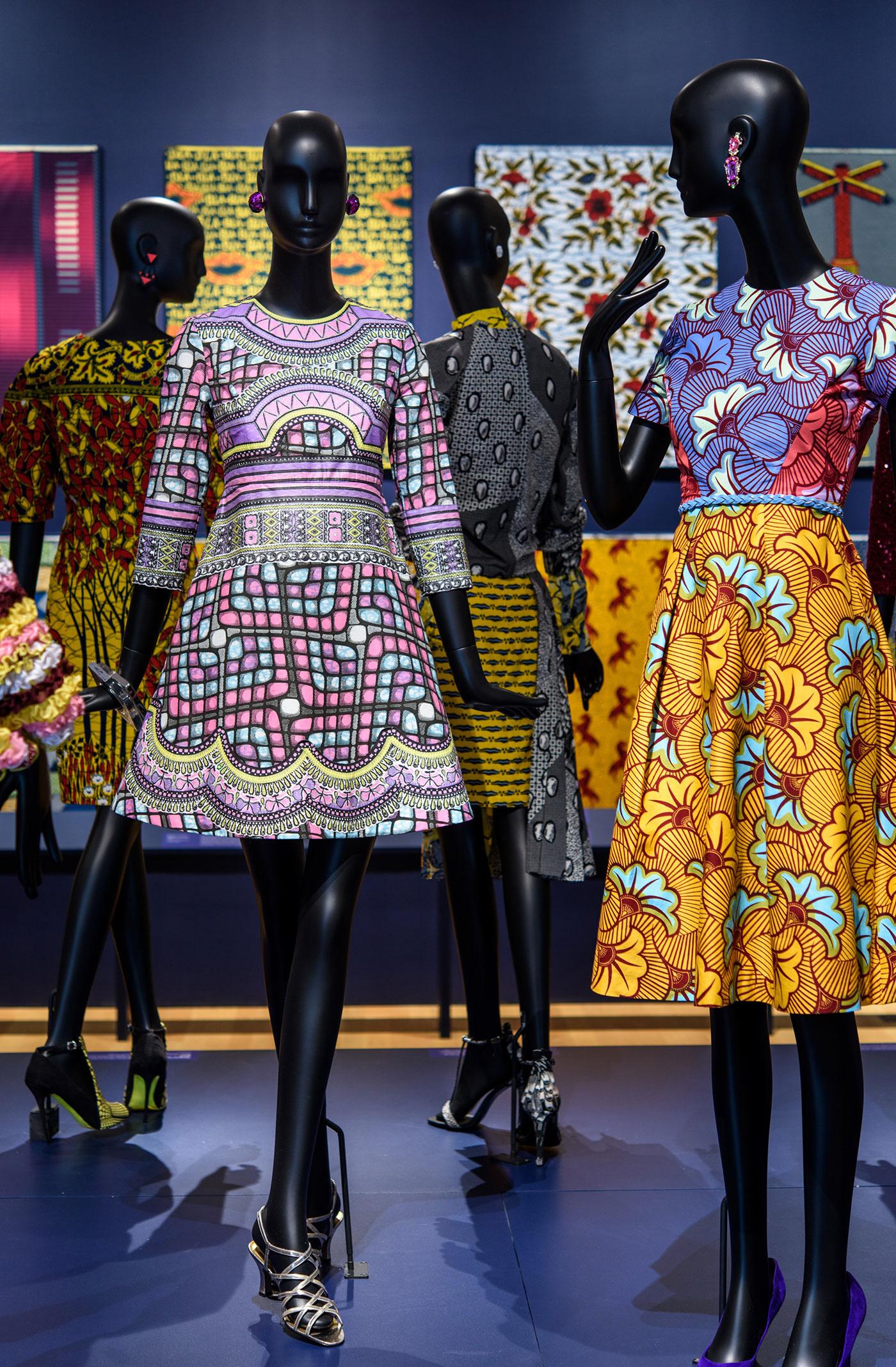
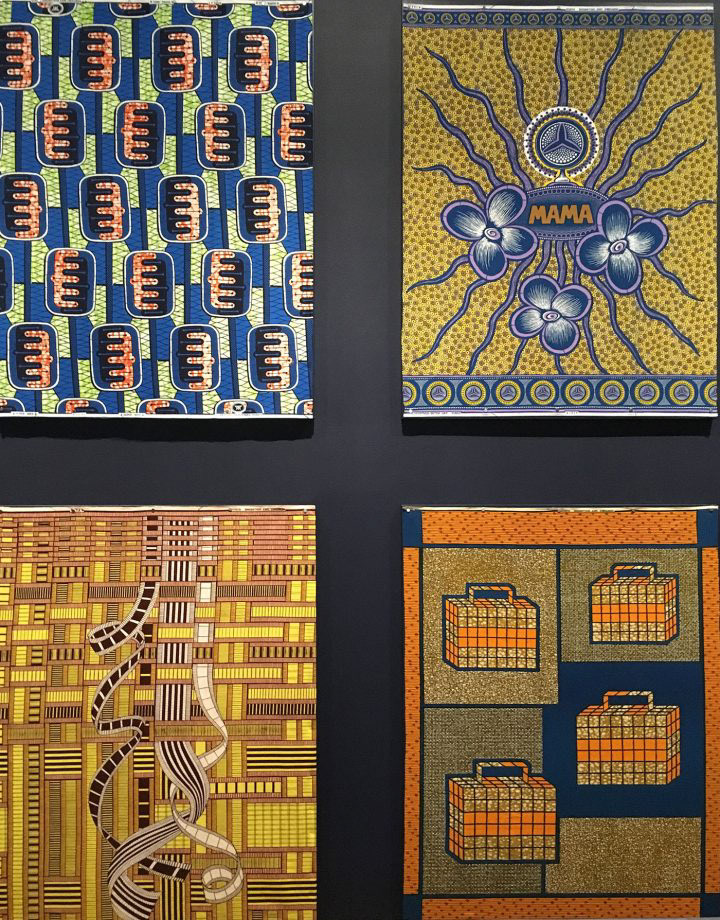
MD: Wax prints with their own pattern?
TLB: Yes. There is a culture there to tell a bigger story.
MD: I really wonder about them, to what extent stories are told for people as opposed to people initiating the stories themselves because they are not textiles that are made in Africa at all.
TLB: I will read the book because it is about this particular style and the history of it.
MD: Yes, there is the Adinkra system and other similar systems across Africa. Symbols that are put on houses.
You will like African Fractals [READ MORE ABOUT AFRICAN FRACTALS HERE], because that is similar. He goes into esoteric patterns, with the Dogon in particular and also the Congolese.
Malidoma often talks about what would be the rituals for this time and place. How can we name some of the things we do as rituals? So we create for ourselves our own symbols, rituals and ceremonies, from who we are, what we are and how we do stuff in the now. So we can own ourselves more and then recognise the context we are in. What is grime in visual art? What does it mean to be in a gang? Sun-Ra had his own thing. What would that be for the man dem or gal dem on the street. Not just for the obvious but for the hidden things. I still cannot fathom why menstruation is so hidden. It is still quite nice that it is still relatively below the table. It is like a secret power for women to get together and make something of for themselves. There is a whole lot of potential symbolism. Things like cancer. This book ‘Becoming Human’ [LINK], she makes collages of a particular era of drawings of womens parts, juxtaposed on each other. Very interesting, sometimes hard to look at. These kinds of things that could come out of how a 16-year old hears how an elder talks about duppy stories. How would they symbolise that. Especially if there task was to symbolise it to make it understandable by a 7 year old.
Malidoma often talks about what would be the rituals for this time and place. How can we name some of the things we do as rituals? So we create for ourselves our own symbols, rituals and ceremonies, from who we are, what we are and how we do stuff in the now. So we can own ourselves more and then recognise the context we are in. What is grime in visual art? What does it mean to be in a gang? Sun-Ra had his own thing. What would that be for the man dem or gal dem on the street. Not just for the obvious but for the hidden things. I still cannot fathom why menstruation is so hidden. It is still quite nice that it is still relatively below the table. It is like a secret power for women to get together and make something of for themselves. There is a whole lot of potential symbolism. Things like cancer. This book ‘Becoming Human’ [LINK], she makes collages of a particular era of drawings of womens parts, juxtaposed on each other. Very interesting, sometimes hard to look at. These kinds of things that could come out of how a 16-year old hears how an elder talks about duppy stories. How would they symbolise that. Especially if there task was to symbolise it to make it understandable by a 7 year old.
TLB: What came to my mind then was instead of having a conversation and then being asked to create something from what we have said. What if we ask the listener to create something from what they have heard.
MD: You know what was interesting. Watching the elders draw and paint. Actually the hardest thing was to just put something down! Please just do anything!
TLB: Well that is art I’m afraid. That is expression in many ways
MD: Yes but I also think it is a disconnection from that expression (of painting). If it were decorating cakes they would just go for it. It is safe. But because these were children’s instruments. A lot of people are told they can’t do art. This is what it felt like.
TLB: This is where it is interesting, we come back to this thing of what is ‘art’. Because really for me art in the end is simply expression. I do not see a distinction between craft and other sorts of art. I do not see a distinction between work done to decorate religious spaces or create things for rituals as indigenous communities do and things to put on walls. I don’t see any distinction. For me it is all human expression. So what I think is powerful about that and is used well by community practitioners, therapists etc is finding that thing that enables the person to be confident about expressing. It is amazing how food for instance has really flourished in terms of people who more and more are able to use food or direct people to use food to express. For instance people will decorate a cake freely but won’t pick up a pencil. I don’t see an issue with that as long as you can find those ways. The problem is if people haven’t found a way to express. It is never always going to be through a pencil, because of the way art is taught in this country.
MD: But there was one elder who was so into it. Into the painting. But that felt like something else. I just felt like “this thing is therapy for you”. There should be more of it.
TLB: So perhaps there is an immediate question then, for all participants, which is what are they comfortable expressing with? Because we are in a problematic space if we are expecting 10 people in a room to all express in the same way. Something that occurred to me was photography. Photos that exist, those on phones or in physical formats. How we may be able tp draw upon those or engage with those. Or potentially taking photos. Get hold of cameras of different kinds. What are other ways?
MD: Clay? I know I like doing things with my hands. Collaging with different materials can be nice.
TLB: Maybe this is something for them. We have spoken about the potential of a conversation between them. Could we facilitate the conversation? Could one of the first conversations be about describing to each other about where or how you are creative. What you love to draw with or express yourself with. How would one express that with an 8 year old? Because as soon as you bring art into the room they might think ‘art class’.
MD: Maybe you don’t. Maybe you don’t ever use that word with anybody. You do things in quite an informal way. If it could be that you have a lump of clay, whatever materials and a whole host of materials assembled. And we work with one group, talking and doing things, this is the story of something that happened to me and you can use any of these things to express it. And having done that they become ambassadors for doing it with another group, because they know how. I would imagine the best group to start with would be the youngest, as they’d be less inhibited?
TLB: Not necessarily! Because this is the thing about the way art is taught in our schools. Also how young people work as peers. They can be pretty horrific in the sense they don’t always encourage each other in the way you need to be encouraged as a creative being. That is my biggest role when I teach art. Encouragement. I am not going to do this for you. I just want you to do it and I am going to give you so much praise that you’ll get a spark of confidence. Until you do it with expression…that includes thinking about it. A lot of my development as an artist hasn’t even been through doing. It has been through thinking. But I am completely unhesitant about thinking. Whereas some people don’t even want to think about it.
So with young people the issue for me between the ages of 5-10yrs is how much of that is knocked out of them. And when it isn’t, it is amazing.
So with young people the issue for me between the ages of 5-10yrs is how much of that is knocked out of them. And when it isn’t, it is amazing.
MD: I think the ratios for our Anansi project could have been better. Some of them just went for it. Others were like “what do I do with this?”
TLB: So are you suggesting then that if we start with the younger ones, working quite tightly with them. And if there are five of them and there is you, myself and another practitioner, so 3 to 5. That would give us quite a strong ratio to work strongly with them.
MD: To do that encouragement. So they would then be more confident. Then if they took that into another group, where we are saying they are now teachers in this situation. There are now 8 teachers in that space. We can be talking about that, keeping up the encouragement.
You were talking about encouragement. Because of the nature of this society, part of the encouragement is making use of everything that somebody does. So there are outlets even if they are not in the eventual tiles.
You were talking about encouragement. Because of the nature of this society, part of the encouragement is making use of everything that somebody does. So there are outlets even if they are not in the eventual tiles.
TLB: This is where I was thinking about the exploration of an online space. Especially as this is just a starter, an exploration. It might not result in a mural but just a few tiles suggesting what can be done. But why not for instance a few tiles and a QR code that will take you to limitless web pages of all the materials that sit behind each of the tiles.
